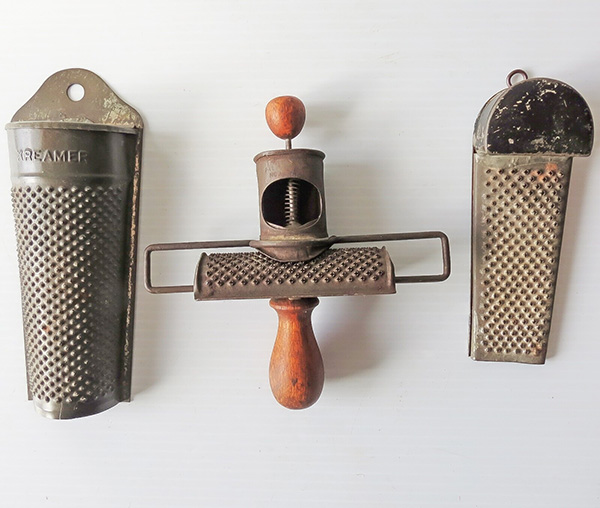An arsenal of flavor: William Kitchiner’s “Magazine of Taste.”
Apicius Redivivus, or The Cook’s Oracle by William Kitchiner first appeared in 1817 and remained in print for decades. Writers invariably describe Kitchiner as eccentric, a fair enough assessment. Kitchiner liked condiments and liked to experiment with his own formulations of them. The best known if seldom made is his “Wow-wow sauce,” probably for the typically self-promotional name he gave it.
To ensure a ready supply of seasonings for dinner guests and for his travels Kitchiner created his “Magazine of Taste” containing his preserved ‘essences,’ ketchups, and sauces along with various powdered herb and spice alone or in combination. It “consists,”, he says in the Oracle “of a ‘SAUCE BOX,’ containing four eight-ounce bottles, sixteen four-ounce, and eight two-ounce bottles.”
Kitchiner explains with some ambiguity that possession of a magazine
“will enable any one to fit up an assortment of flavouring materials according to their own fancy and palate, and we presume, will furnish sufficient variety for the amusement of the gustatory nerves of a thorough-bred Grand Gourmand of the first magnitude”
unless, a playful Kitchiner warns, “Cayenne and Garlick--have not completely consumed the sensibility of his Palate” which also demonstrates once again that the English were no strangers to pungent seasoning and liked their food highly seasoned in opposition to subsequent conventional wisdom
Does he give his reader sway to select her own assortment of “flavouring materials?” Probably not; a dogmatic Kitchiner trusts his own judgment and the judgment of his Committee of Taste, a varying collection of dinner companions, many famous, who tested all the recipes and ideas that he incorporated in the Oracle. It is likelier that he believed his own assortment furnished the sufficient variety for anyone.
 Anyone who was anyone already carried a nutmeg grater.
Anyone who was anyone already carried a nutmeg grater.
The assumption is reinforced by the presence of twenty formulations he created himself, recipes described elsewhere in the Oracle, out of the twenty eight he lists for the Magazine. His own in order of appearance:
‘Curaçoa’
‘Syrup’
Salad Sauce
Pudding Catsup
‘Sauce Spectacular, or double relish’
Mushroom Catsup
Prepared Mustard
Seasoned Salt
Curry Powder
‘Soy’
Essence of Anchovy
A Cayenne blend
Soup-Herb Powder’
‘Ragout Powder’
‘Pea Powder’
‘Zest’
‘Essence of Celery’
Sweet Herbs
‘Lemon Peel’ and
Eschallot wine
The remaining eight:
Pickles
Brandy
Walnut Pickle
Vinegar
Oil
Lemon Juice
Pepper and
Powdered Mint.
A practical Kitchiner specifies in a footnote the preferred vessels to choose for a Magazine. If the bottles are square,” he advises his reader, “and marked in quarter ounces… it will save trouble in compounding.”
It appears at first odd that Kitchiner does not include nutmeg, perhaps the most prized spice in the England of his time for dishes both savory and sweet, but the omission may be misleading. Fastidious gentlemen carried with them fashionable finely wrought nutmeg graters, often crafted in sterling, to ensure freshness of supply.
From the list it is apparent that Kitchiner accounted for customizing the savory and the sweet, although the savory seasonings do predominate because unlike many of his contemporaries he was not besotted with dessert.

